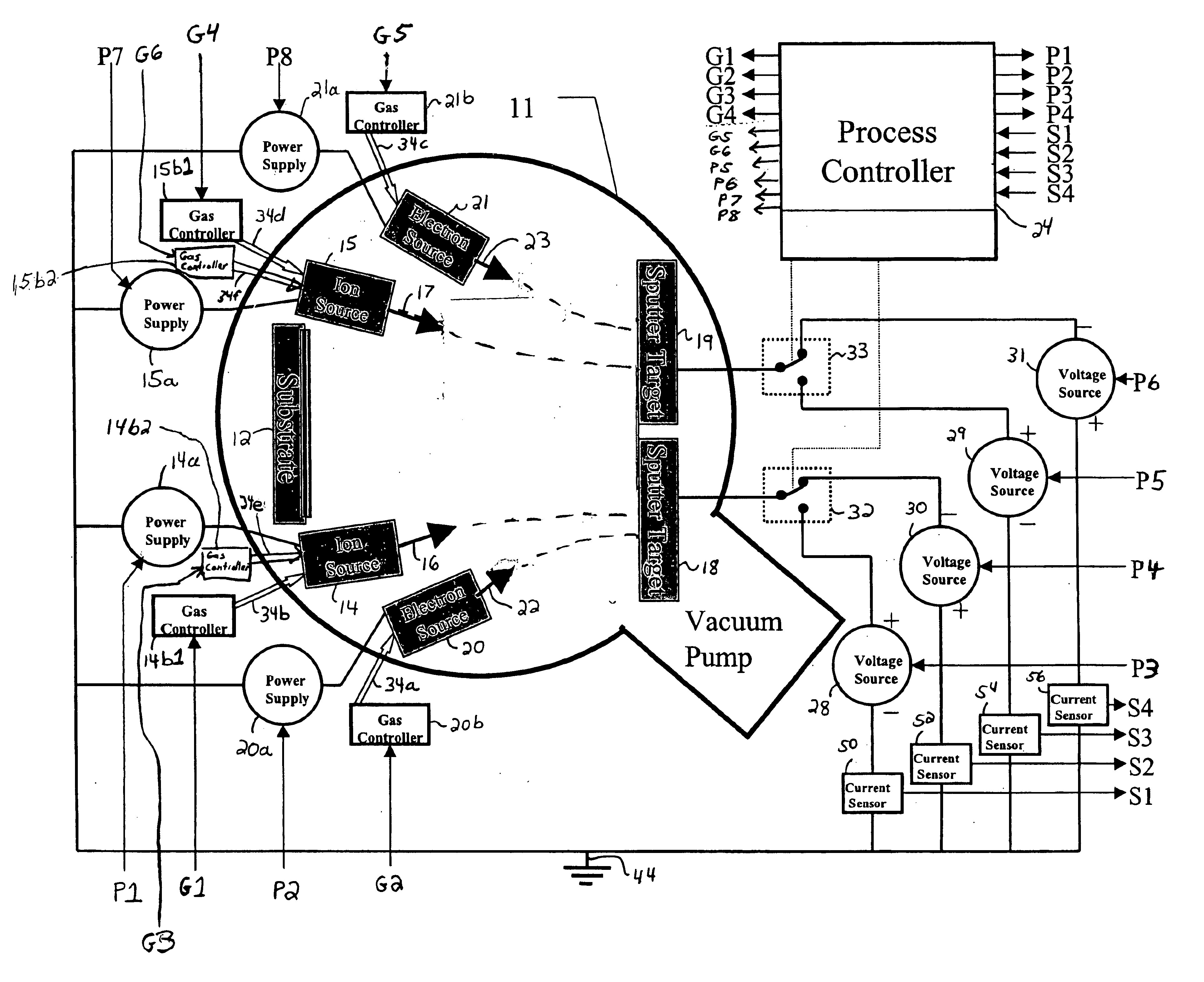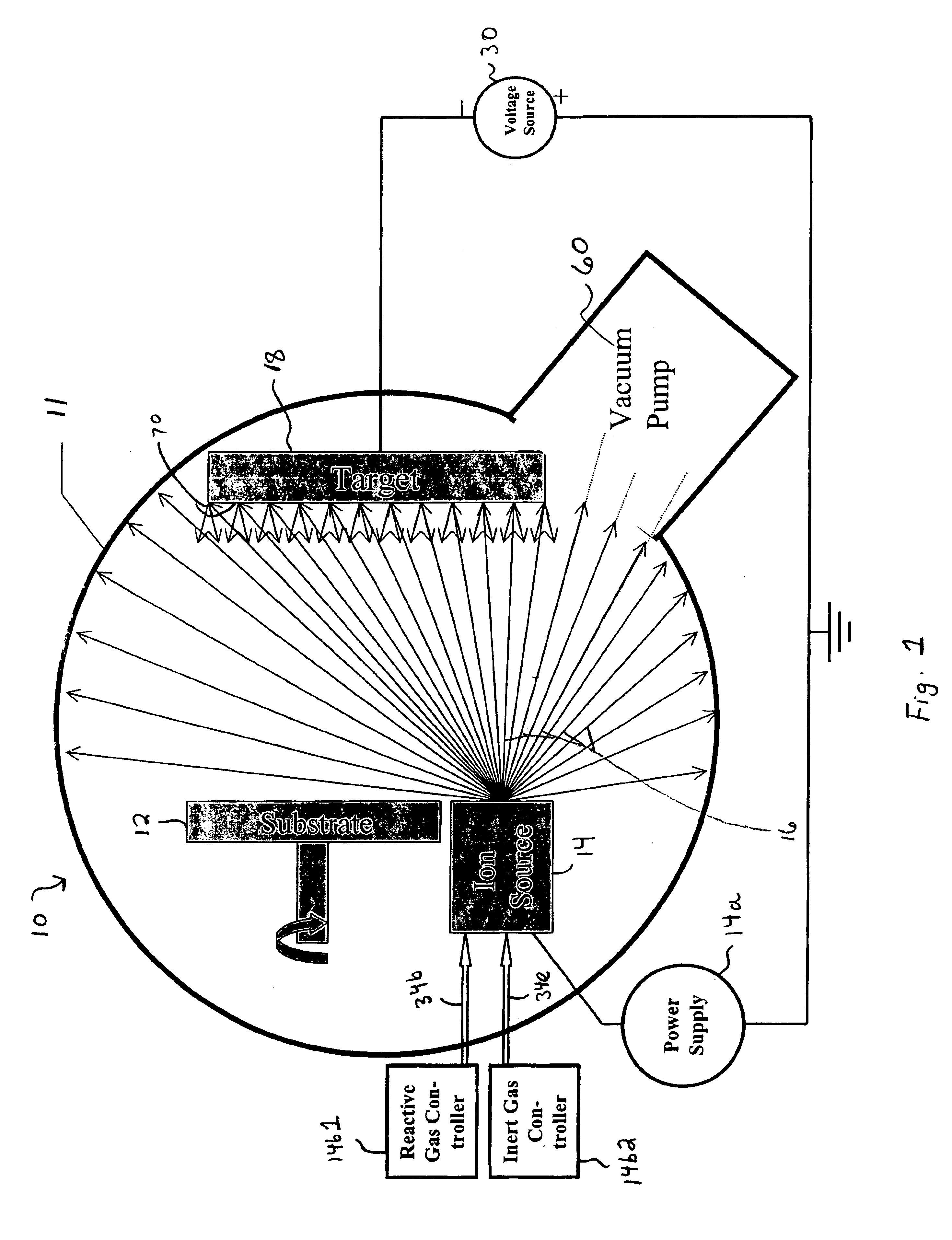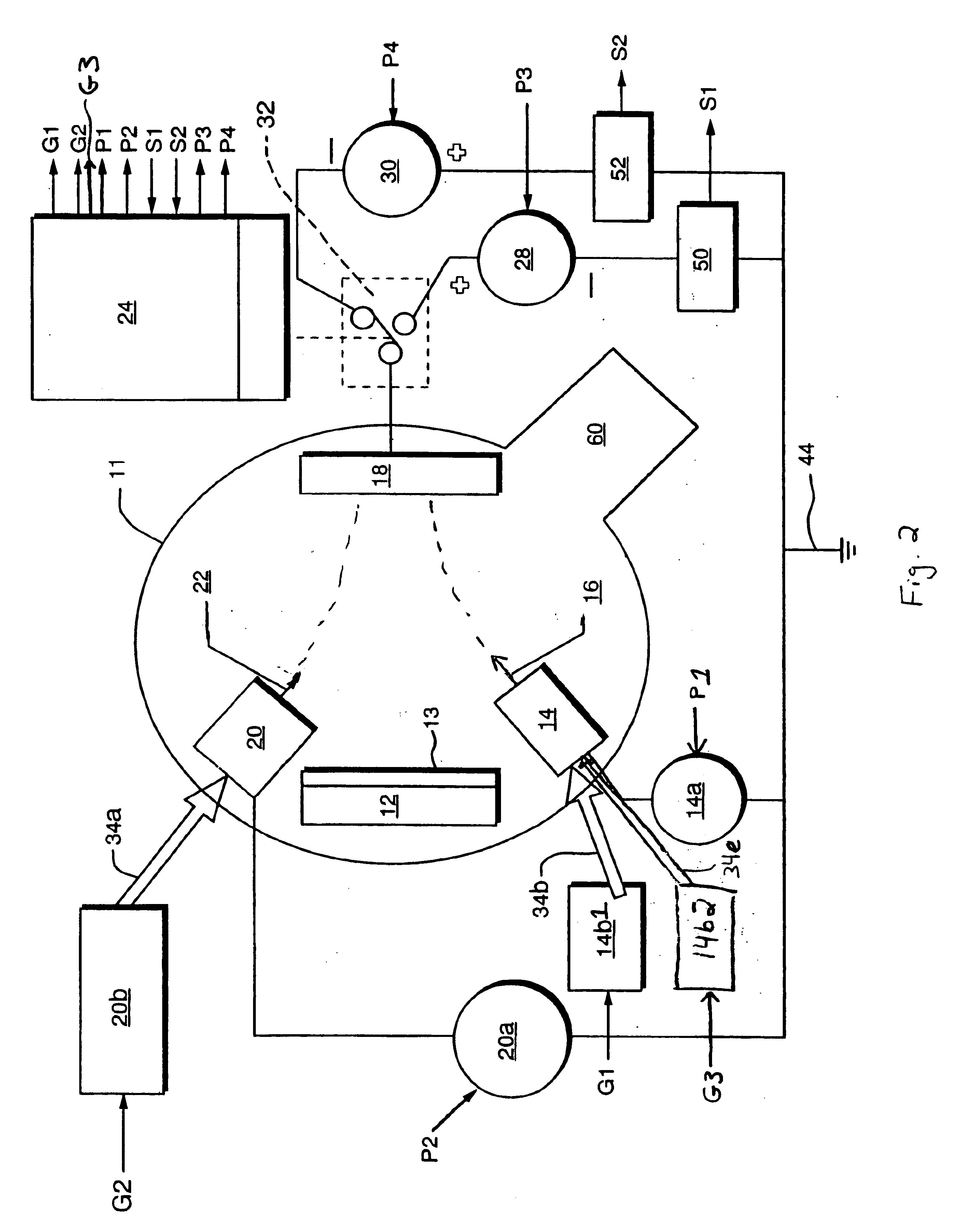System and method for performing thin film deposition or chemical treatment using an energetic flux of neutral reactive molecular fragments, atoms or radicals
a technology of neutral reactive molecular fragments and energetic fluxes, applied in vacuum evaporation coatings, electrolysis components, coatings, etc., can solve problems such as iad that is too violent and damaging, and practitioners typically fear two aspects of iad, and significant momentum-transfer damage may occur
- Summary
- Abstract
- Description
- Claims
- Application Information
AI Technical Summary
Benefits of technology
Problems solved by technology
Method used
Image
Examples
Embodiment Construction
There is shown in FIGS. 1-2, a system 10 for forming a chemically reacted layer 13 on or near the surface of a substrate 12. Reactive gas controller 14b1 provides a chemically reactive molecular gas 34b to an ion source 14, which generates a divergent ion current 16 directed at the target 18. The ion current 16 contains at least one species of chemically reactive molecular ion, and the target 18 is disposed in a chamber 11 having a partial vacuum in the range of 10.sup.-2 to 10.sup.-5 Torr. A voltage source 30 applies a bias to the target 18 such that chemically reactive molecular ions from the ion source 14 are accelerated toward the target 18 with sufficient kinetic energy to dissociate at least some of the chemically reactive molecular ions by collision with the surface of the target 18 to form a population 70 of neutral chemically reactive molecular fragments, atoms or radicals at least some of which scatter away from the surface of the target 18 and into the chamber 11. At leas...
PUM
| Property | Measurement | Unit |
|---|---|---|
| Energy | aaaaa | aaaaa |
| Thickness | aaaaa | aaaaa |
| Angle | aaaaa | aaaaa |
Abstract
Description
Claims
Application Information
 Login to View More
Login to View More - R&D
- Intellectual Property
- Life Sciences
- Materials
- Tech Scout
- Unparalleled Data Quality
- Higher Quality Content
- 60% Fewer Hallucinations
Browse by: Latest US Patents, China's latest patents, Technical Efficacy Thesaurus, Application Domain, Technology Topic, Popular Technical Reports.
© 2025 PatSnap. All rights reserved.Legal|Privacy policy|Modern Slavery Act Transparency Statement|Sitemap|About US| Contact US: help@patsnap.com



